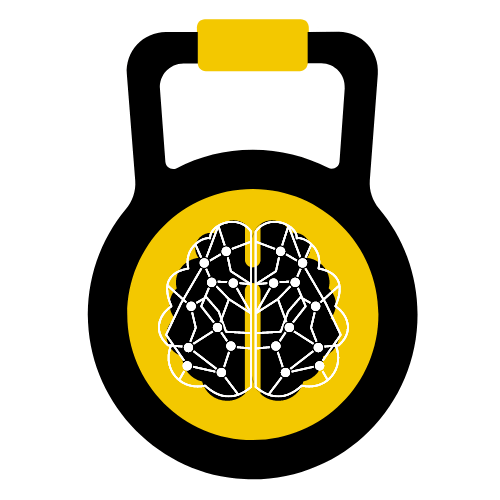Citrulline Malate is a nonessential amino acid that is definitely not commonly present in our daily diet, but it plays a particularly important role in many biological processes.
Although not a component of most proteins in the human body, citrulline can be found in our hair, skin and nerve cells. Citrulline malate is extremely effective and helps to remove the lactic acid, formed in the muscles due to muscle contractions.
There is evidence that supplementation with L-citrulline malate (a form of citrulline) leads to a significant reduction in the sensation of fatigue, increased ATP production during intense exercise, and relatively quickly reduces the time needed for recovery after heavy exercises.
Citrulline, together with arginine and ornithine, is particularly important in the urea cycle, during which the highly toxic ammonia is deactivated and converted to urea.
Top 10 Best Selling Citrulline Supplements
Product | Name | Buy on iHerb | Buy on Amazon |
|---|---|---|---|
#1 LLMAX Nutrition Citrulline Malate | |||
#2 Primaforce Citrulline Malate | |||
#3 Kaged Muscle Citrulline | |||
#4 Doctor's Best L-Citrulline | |||
#5 Now Foods L-Citrulline |
What Is Citrulline Malate
Citrulline is a nonessential amino acid that is definitely not commonly present in our daily diet, but it plays a particularly important role in many biological processes.
Although not a component of most proteins in the human body, citrulline can be found in our hair, skin and nerve cells.
The Role of Citrulline in the Metabolic Processes
By eating healthily, we provide our body enough proteins and energy, necessary for the proper muscles functioning. ATP is a nucleotide that contains three phosphate residues in its molecule. They are linked with a bond, rich in energy.
The ATP molecule stores the energy of all living systems through these macroergic bonds. These connections can be split (hydrolyzed) subsequently and the final result is a significant amount of energy.
The released energy is used for the performance of the vital processes in the cell (movement, biosynthesis, transport of substances, etc). Although ATP is the primary necessary fuel for the muscle contraction, its concentration in the muscles is relatively low (5-7μmol/g muscle).
The amount that can be exhausted in less than one second, during intense muscle activity (unless re-synthesized into quality), is equal to the amount spent. On the other hand, many factors can contribute to the state of fatigue during intense exercise. For example reducing the amount of blood sugar, dehydration, fever, and a reduced amount of muscle glycogen.
High-intensity exercises require a large amount of energy and the final result is the conversion of muscle glycogen into glucose and ATP, which is being provided to the cells. Proteins break down during intense exercises and, as a result, ammonia is formed.
This ammonia gets accumulated in the liver cells. It is toxic and prevents not only the proper functioning of many vital enzymes but also increases the permeability of cell membranes for harmful ions.
The increased amount of ammonia in the body is accompanied by a number of symptoms, the most frequently reported of which are: reduced concentration and lack of adequate response, memory loss, psychosis, and tremors.
The accumulation of ammonia can lead to situations of extreme fatigue even in healthy athletes. In order to reduce the accumulation of toxic substances in the liver cells to the utmost, there is a series of reactions called “the urea cycle".
They lead to the conversion of ammonia in a waste product that is transported to the kidneys and excreted in the urine. Ammonia reacts with carbon dioxide and the orthinine amino acid in the "power plants of the organism" or the so-called mitochondria.
Thus citrulline is formed. Then, passing from the mitochondria into the cytoplasm, citrulline gets converted into arginine. The result is the detoxification and elimination of ammonia from the liver cells.
What Do We Know About Citrulline Malate
Citrulline malate is extremely effective and citrulline malate helps to remove the lactic acid, formed in the muscles due to muscle contractions. This organic compound combats toxins, containing amino groups.
The processes of liver cells detoxification from ammonia are almost impossible without their help. One of the most important properties of this amino acid is that it brings the additional concentration of arginine in the cells.
Arginine is an aliphatic amino acid that exists freely in the body or in a connected state with proteins. CM participates in the urine formation and in the nitrogen exchange (arginine is both a donor and a natural nitrogen carrier that is necessary for the building of muscle tissue).
It helps to increase muscle mass and to reduce fat in normal physical pressure, and also reduces wounds healing time and is especially important after fractures. It has a protective role in the cardiovascular system.
Citrulline, together with arginine and ornithine, is particularly important in the urea cycle, during which the highly toxic ammonia is deactivated and converted to urea. Ornithine acts as a catalyst for this process, as it may be repeatedly used by the body. In combinations with arginine, ornithine increases the levels of growth hormone and insulin. Any violation of this cycle leads to fatal accumulation of ammonia in the blood.
There is evidence that supplementation with L-citrulline malate (a form of citrulline) leads to a significant reduction in the sensation of fatigue, increased ATP production during intense exercise, and relatively quickly reduces the time needed for recovery after heavy exercises. It is proven that it treats ammonia poisoning.
Why Should We Take Citruline Malate as a Supplement
Because of the following advantages:
- A rise in energy production;
- Directly affects the production of nitric oxide; improves nitrogen balance;
- Reduces the accumulation of lactic acid and increases the flow of nutrients and oxygen to the muscles;
- Optimizes the blood flow by conversion of l-arginine;
- Has a beneficial effect in the treatment of sickle cell anemia;
- Delays the development of atherosclerotic lesions;
- Improves the body's metabolism;
- Stimulates the immune system by increasing the body's resistance;
- Reduces states of stress and fatigue.
Recommended Doses
To enhance sports performance the recommended dosage is 6-8 gr, 30 - 60 min prior to workout. Citrulline Malate is also known as L-Citrulline, Stimol (Brand Name), Watermelon extract.






